Roman Art and Archaeology Exam 2025
1/50
There's no tags or description
Looks like no tags are added yet.
Name | Mastery | Learn | Test | Matching | Spaced |
|---|
No study sessions yet.
51 Terms
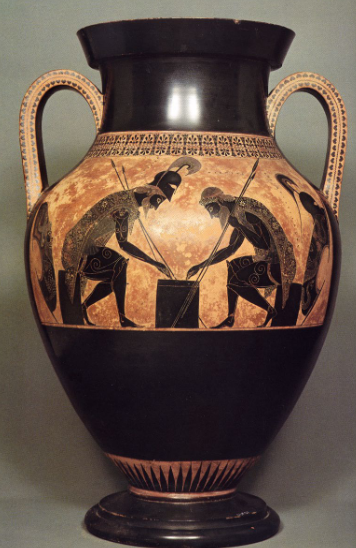
Vatican amphora (late 6th century) found in Italian context. Illustrates Roman desire to have greek luxury goods
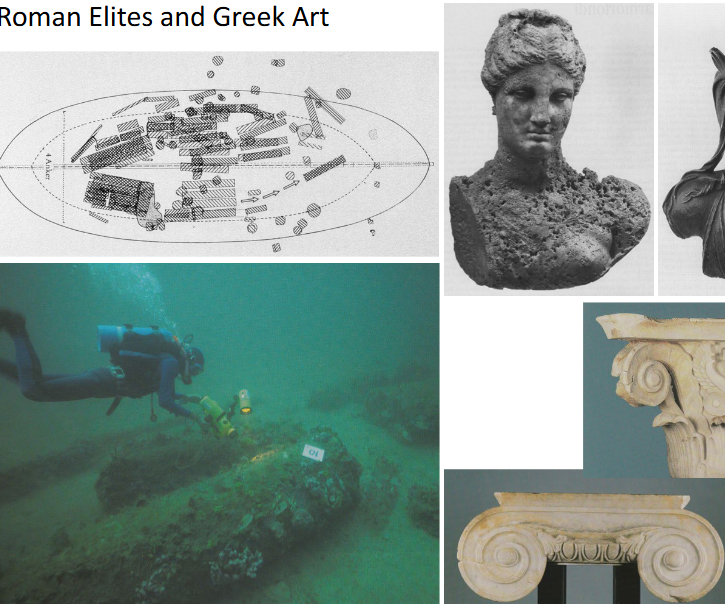
Mahdia Shipwreck (110-90 BC): contained several luxury Greek items.
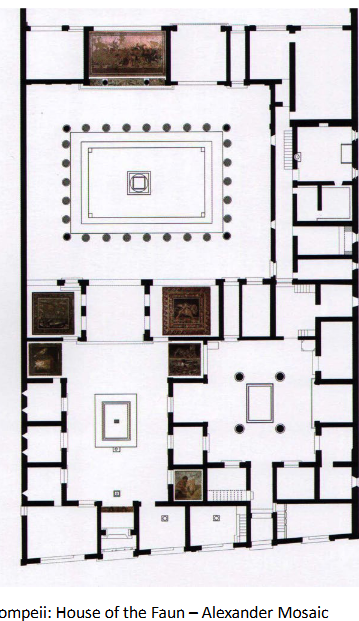
House of the Fawn: Alexander Mosaic amongst other Mosaics. Illustrates the influence of Hellenistic art on Roman culture.
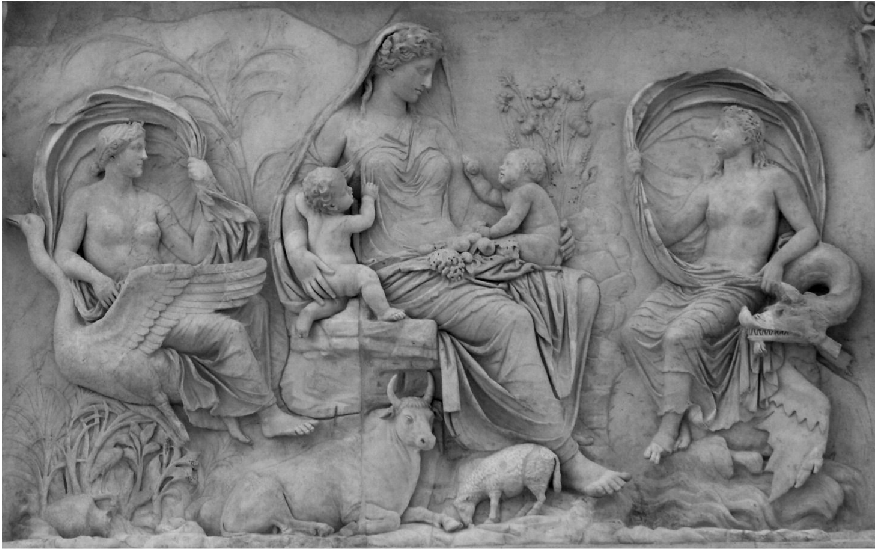
Tellus/Venus/Ceres with Babies (Romulus and Remus?).
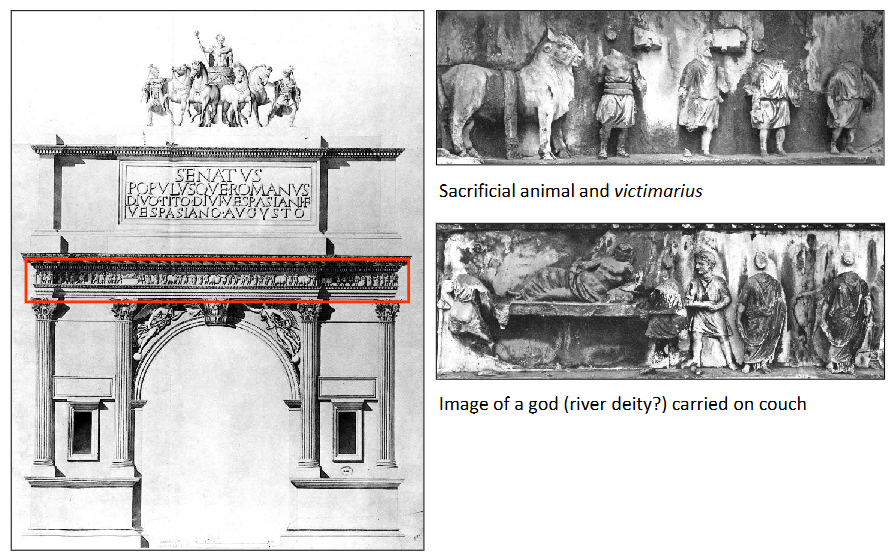
Arch of Titus 81 AD.
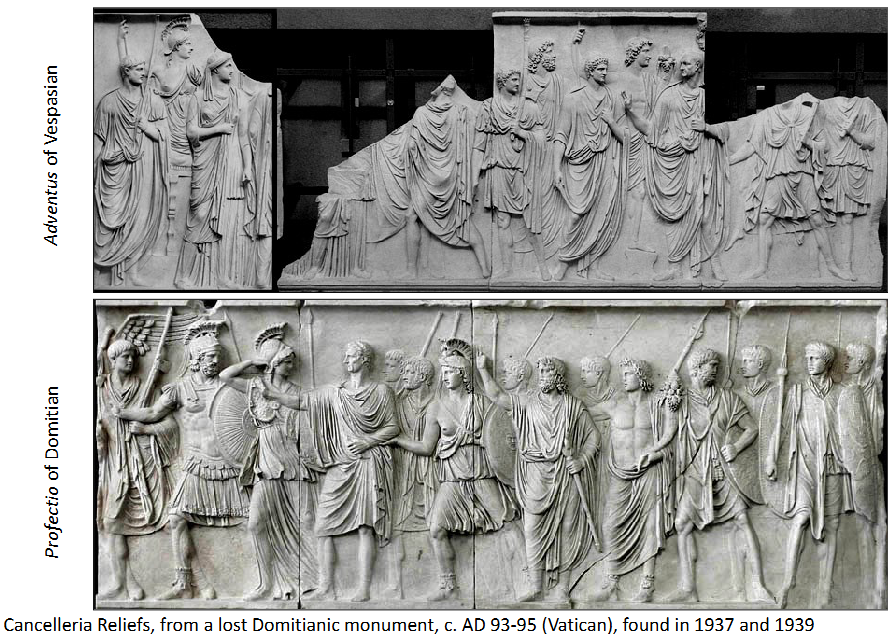
Cancelleria Reliefs from a lost Domitian Monument (c. 93-5 AD): adventus of Vespasian and Profectio of Domitian.
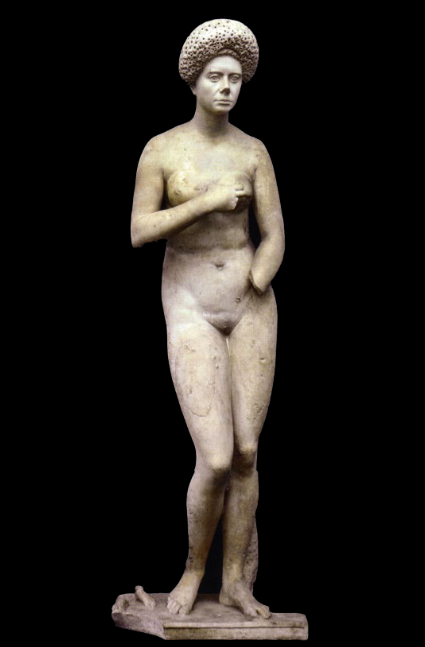
Portrait of a Roman Matron as Venus, with her hairstyle matching the popular form of the period of 90 AD; her form mirrors Greek representations of Aphrodite.
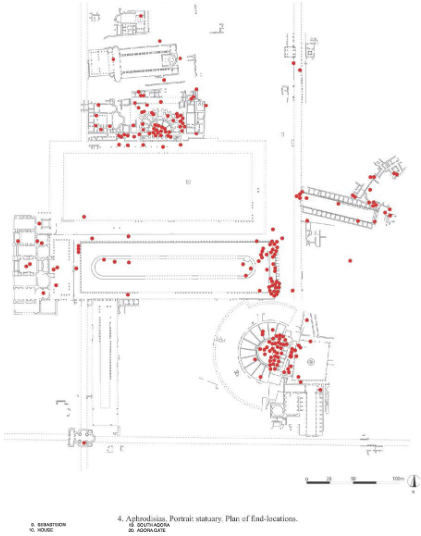
Aphrodisia: illustrates the high density of Roman commemorative statuary and portraits found within public buildings of the period. The reason is related to both celebration of imperial cult and people who contributed to public infrastructure.
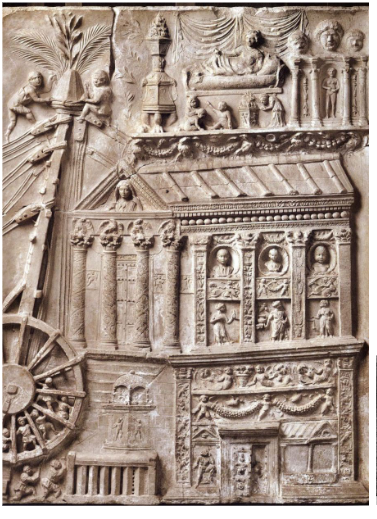
Tomb of Q. Haterius Tychicus and his wife, a building contractor from the early 2nd C. AD, Rome. Contains illustrations of slaves, which provides us some insight into the presence of slaves in the archaeological record.
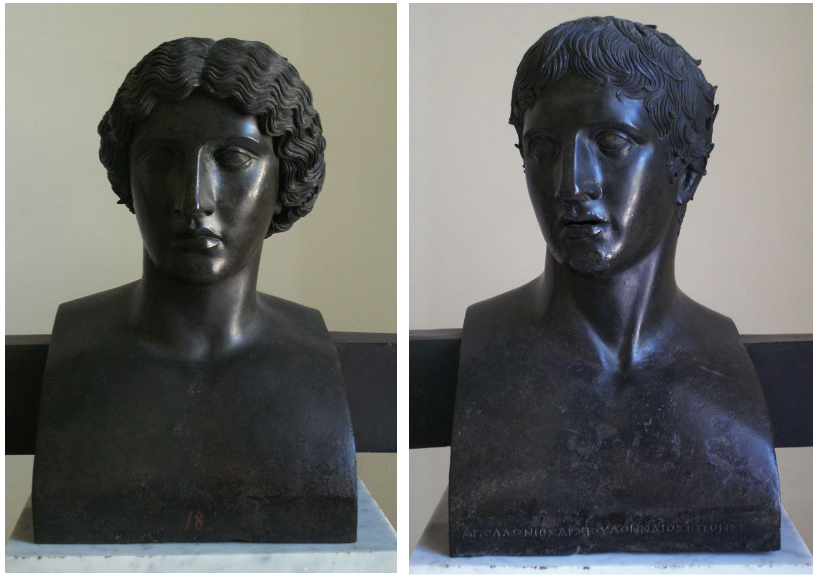
busts of an Amazon and Doryphoros of Polykleitos, both found in the House of the Papyri, by Greek sculptors. Part of a larger assemblage of Hellenic statuary found in the villa.
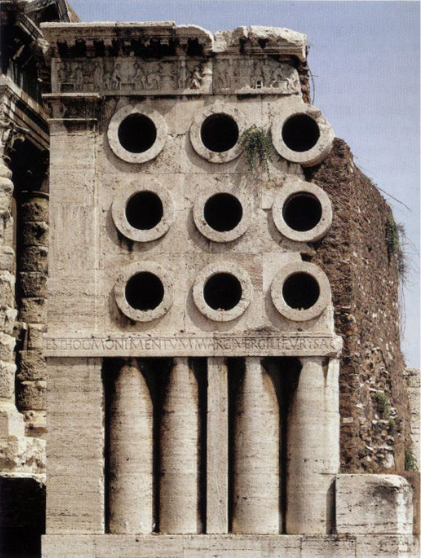
Tomb of M. Virgilius Eurysaces, c.20 BC: a freedman baker’s tomb in Rome, illustrating the ovens of his trade, as well as reliefs on the sides showing the processes containing imagery of the process and slaves
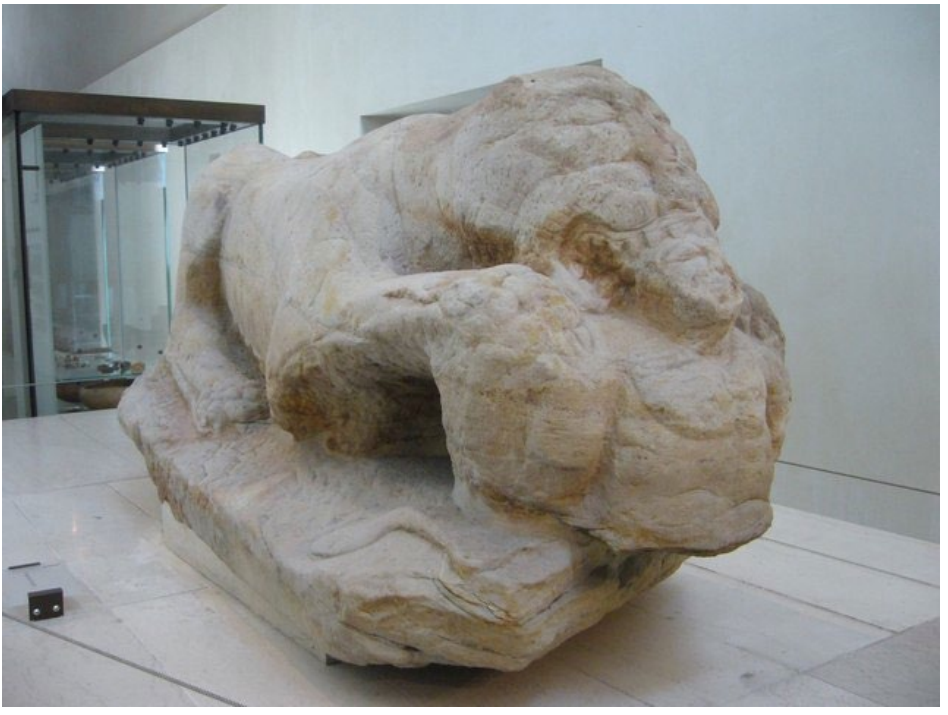
Cramond Lioness 2nd c. AD: symbolises Roman strength and a protective style for the tomb
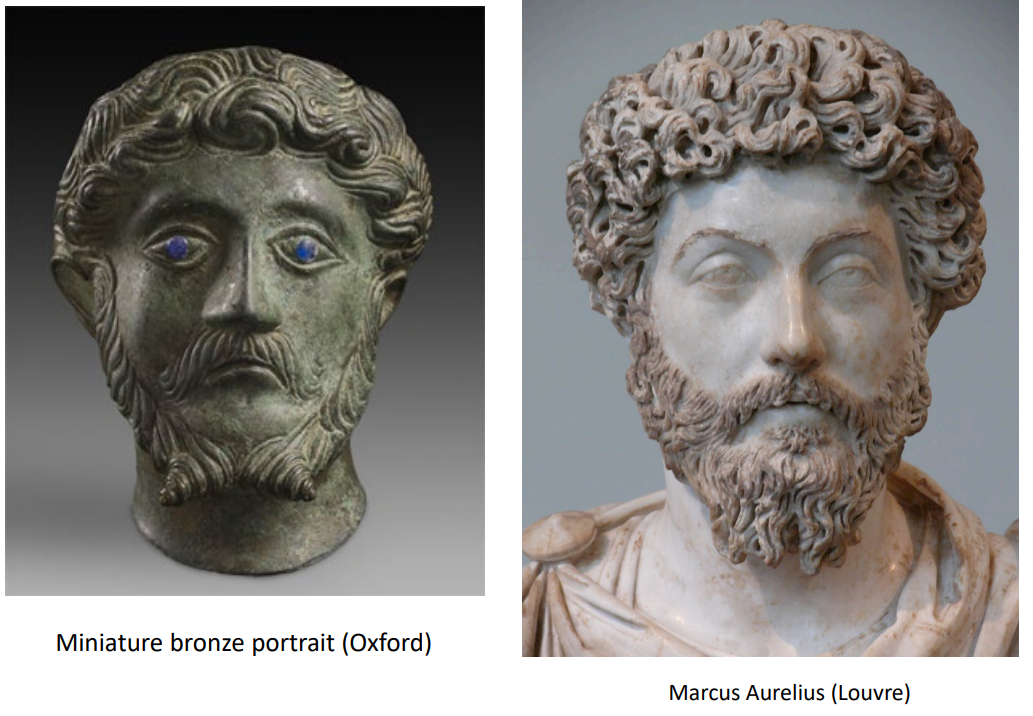
British Bronze representation likely of the Roman Emperor Marcus Aurelius in the 2nd c. AD
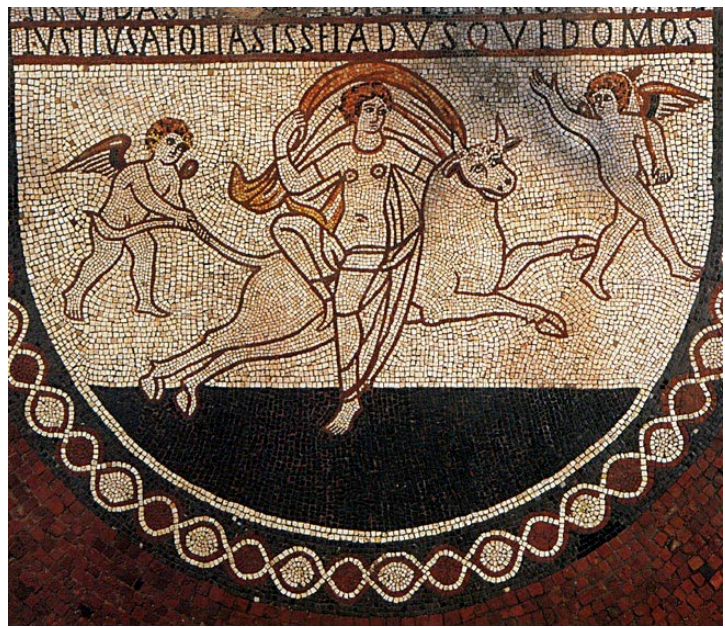
Europa and the Bull from Lullingstone Villa, Kent, early to mid 4th c. AD
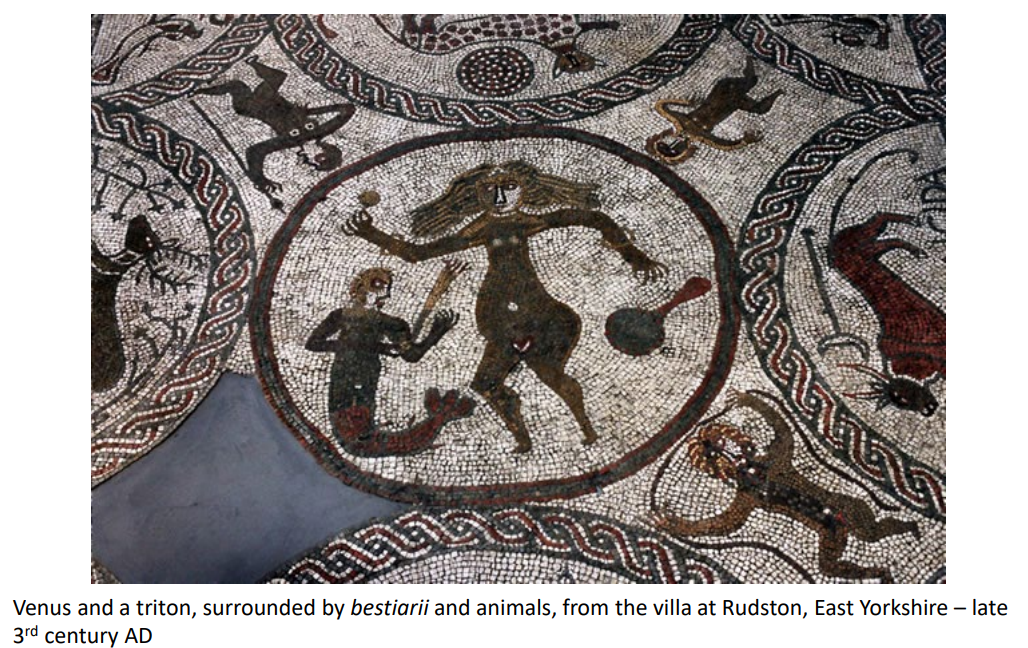
Venus and Triton from Villa at Ruddingstone, Yorkshire, late 3rd c. AD. Likely a reinterpreted form of Venus as a Brittonic fertility goddess
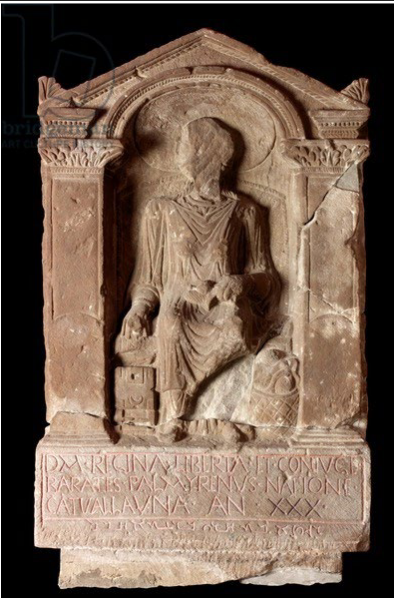
Tombstone of Regina. Palmyran script, Roman relief and located in Britain.

Relief of Amquat and Relief of Viria Phoebe and G. Virius Alcimus. Palmyran local vs Greco-Roman migrant into the region, illustrating adaption to local forms with retention of certain Latin features
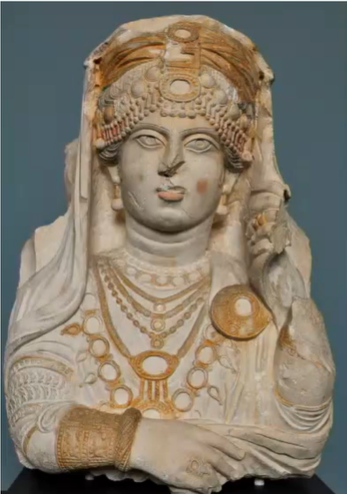
Beauty of Palmyra 190-210 AD
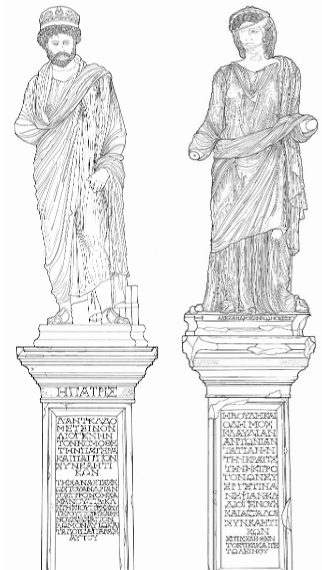
Dometinius and Tatiana, Aphrodisia. Two figures honoured for helping building infrastructure.
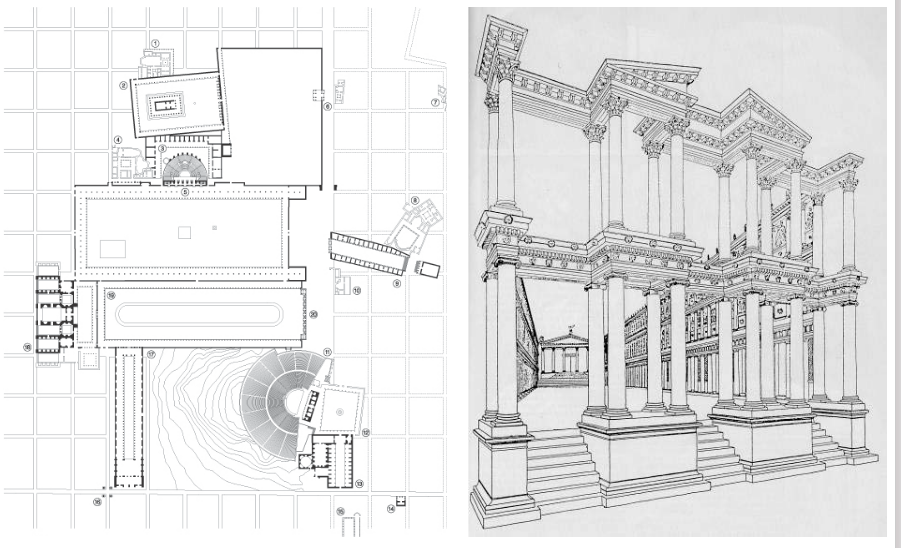
Sebasteion at Aphrodisia: site of most honourific or cult statues
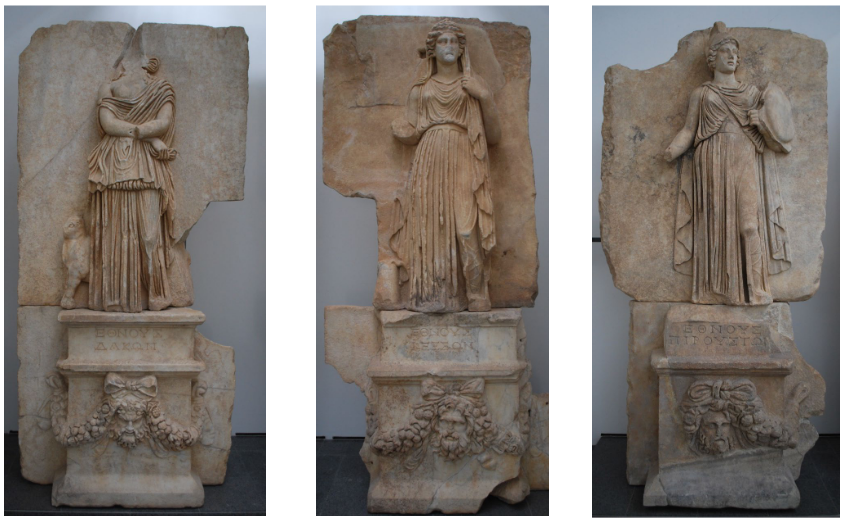
The Ethnoi of the Dacians, Bessi and Pirousti at the Sebasteion
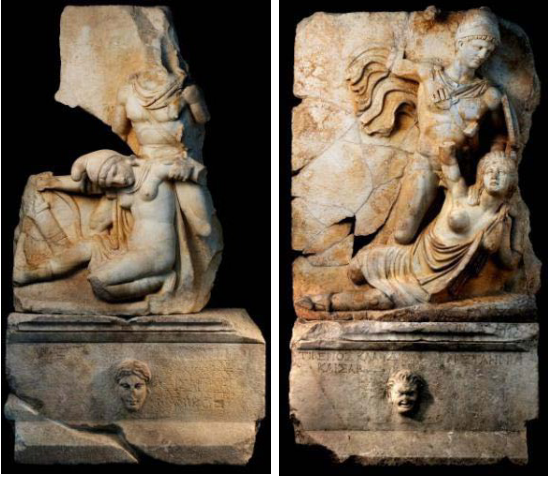
Nero with Armenia and Claudius with Britannia

Lepcis Magna, Libya: originally a Phoenician foundation, contained three Temples; Basilica; and Senatorial buildings. Severus was born in this city. Contained a Severan Quadrifon, Hadrianic Bath and Augustan Theatre
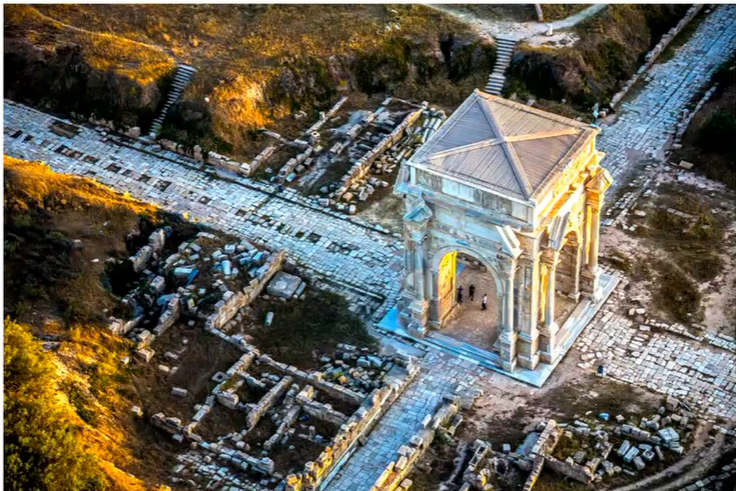
Severan Quadrifon at Lepcis Magna
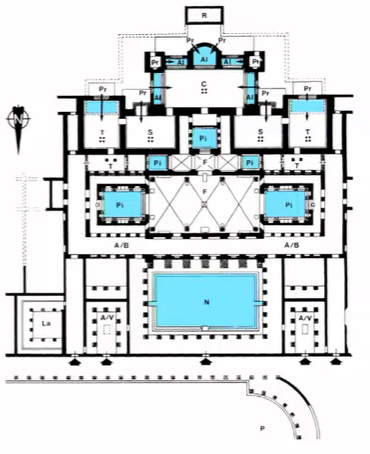
Hadrianic Baths at Lepcis Magna
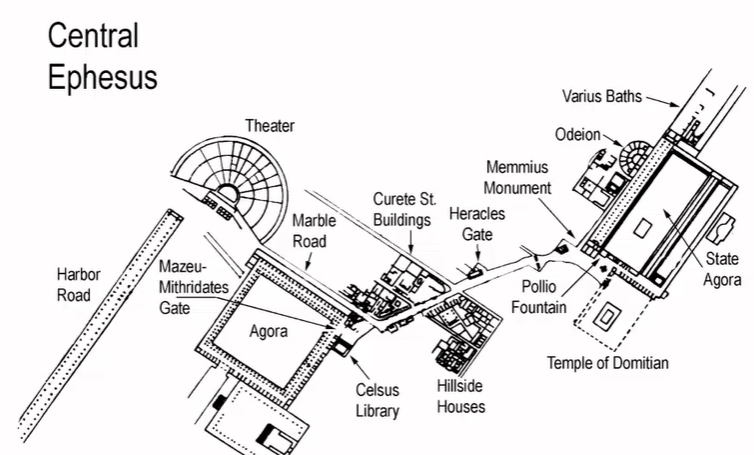
Ephesus: orignally a greek city, but became the capital of Asia minor at one point. Two agoras, Stoa-basilica dedicated to Artemis (11AD), Curetes street with statues
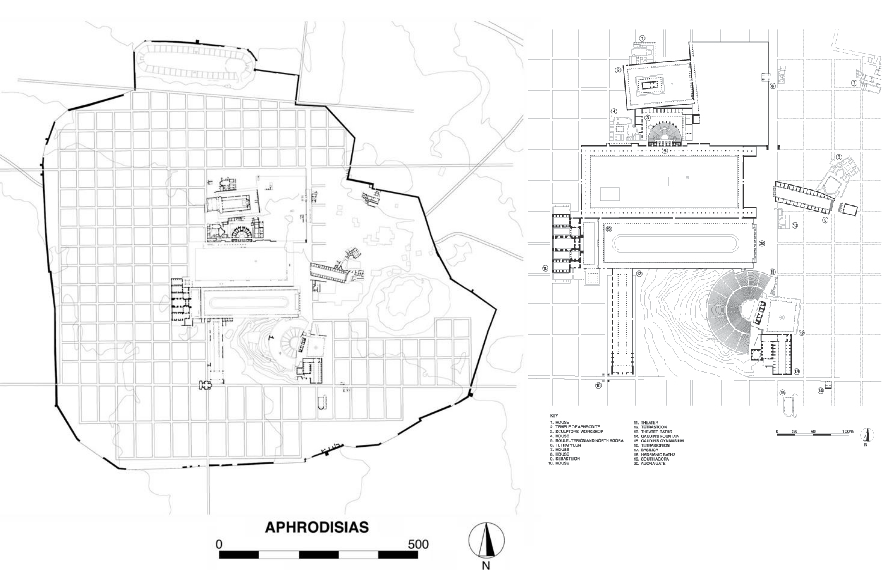
Aphrodisias: contained the Sebasteion, Tetrapylon, Place of Palms , and Hadrianic Baths and Basilicas
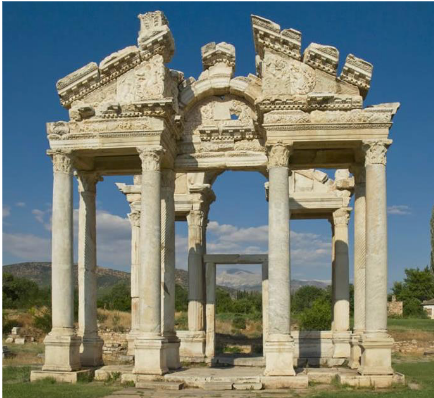
Tetrapylon, Marked the entrance to the main temple of Aphrodisia
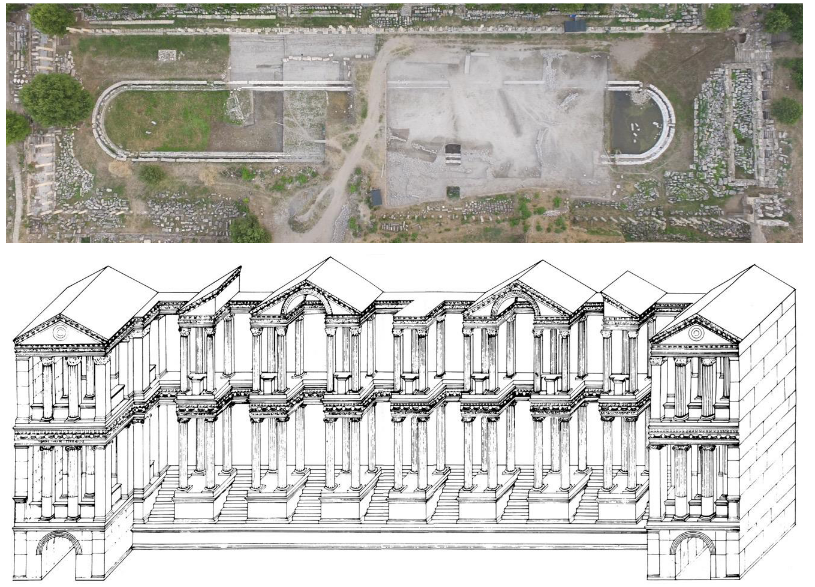
Place of Palms pool and Agora gate
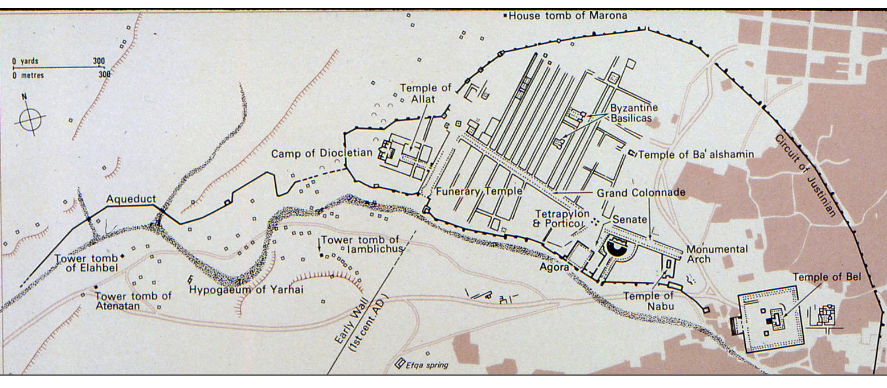
Palmyra: contained many typical Roman urban features, but its temples are unique and contained a Tariff court

Temple of Bel: some greek style features but largely Eastern style
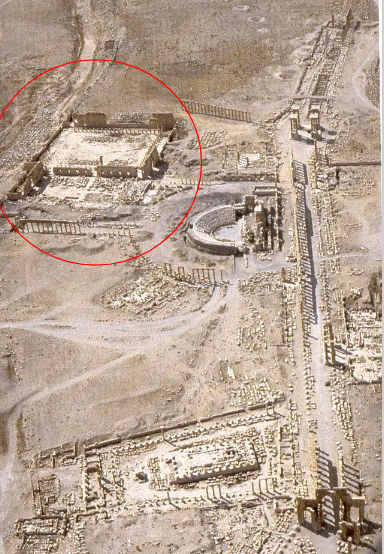
Palmyran Agora, Senate and Tariff house
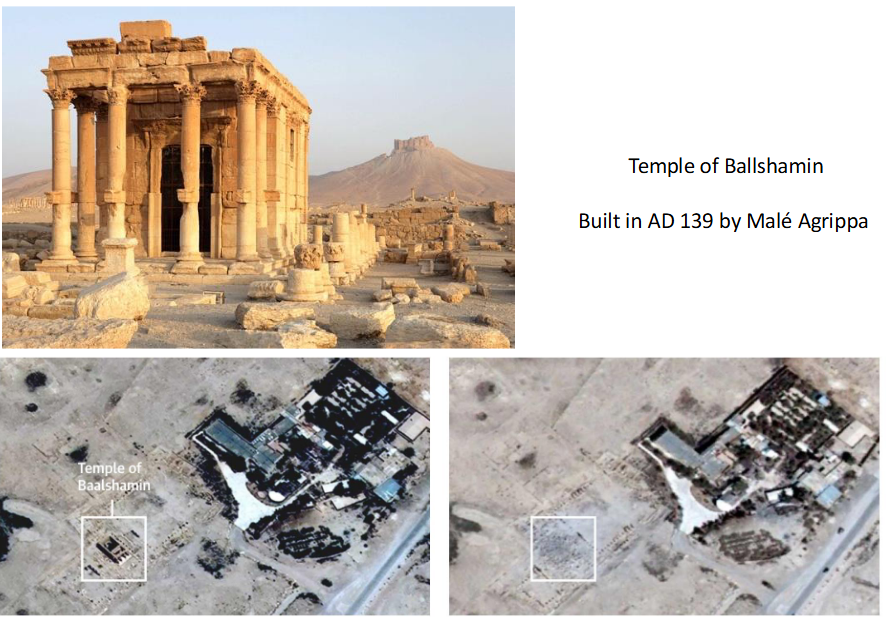
Temple of Ballshamin built in 139 AD by Male Agrippa in Palmyra
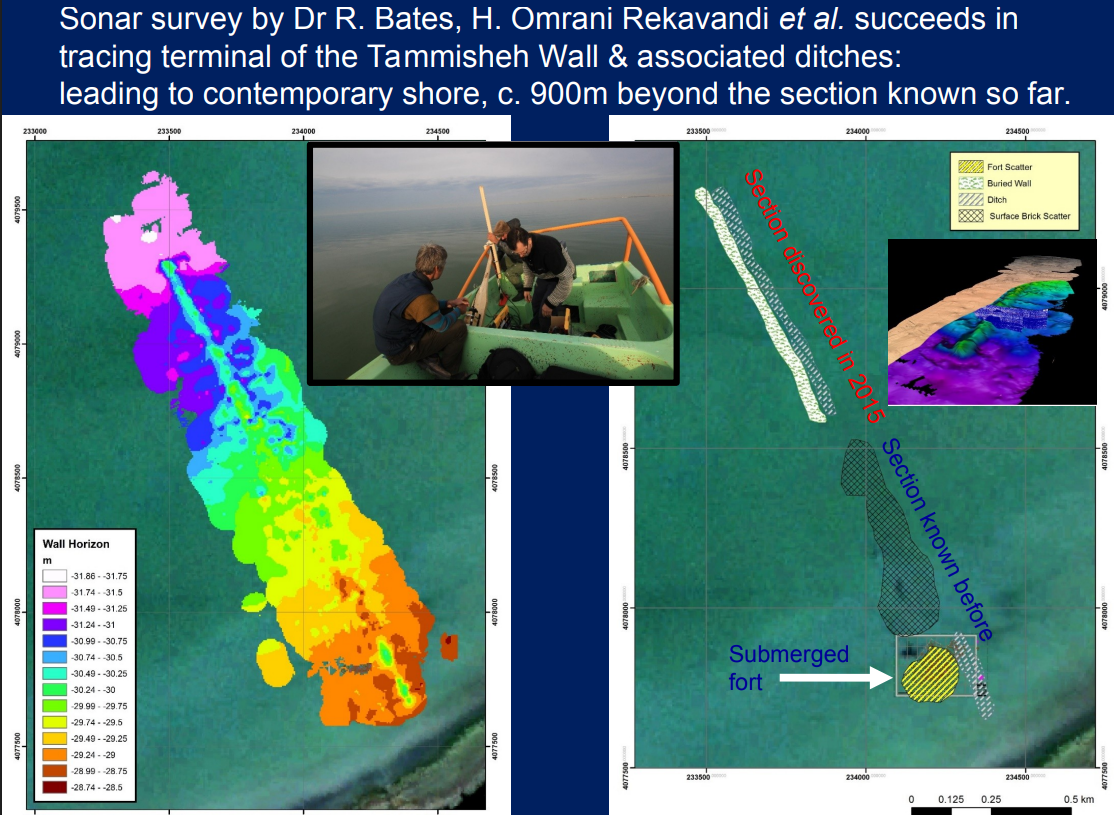
Sonar survey of Tammisheh Wall and fort
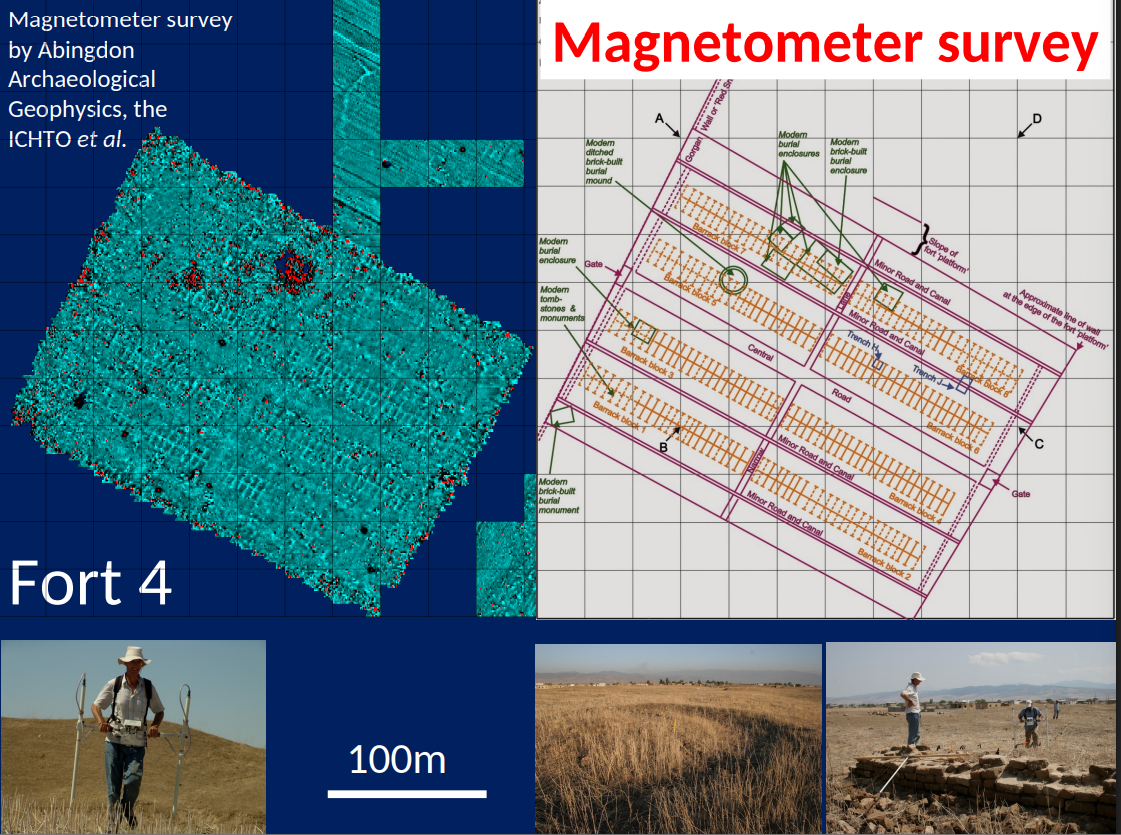
Magnetometer Survey of Gorgon Wall fort 4
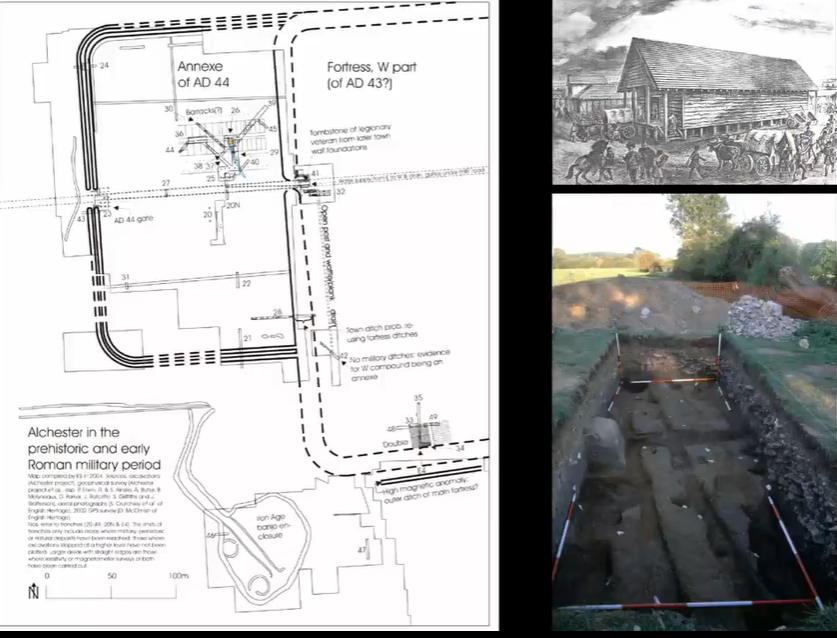
Alchester Annex Gate: oak posts found in the ground allowed for dendrochronological dating to 44/45 AD
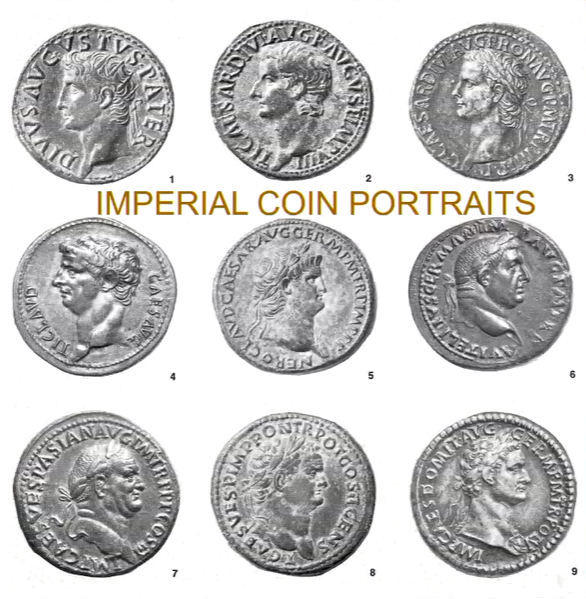
Augustus to Domitian on silver denarii: illustrates the process of how emperors transformed their portraitures to their regimes precursors
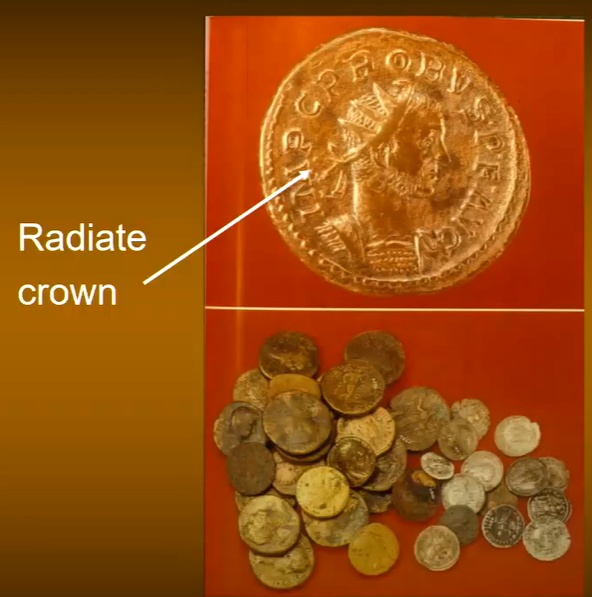
the Radiate Crown which marks many of the 3rd century onwards emperors
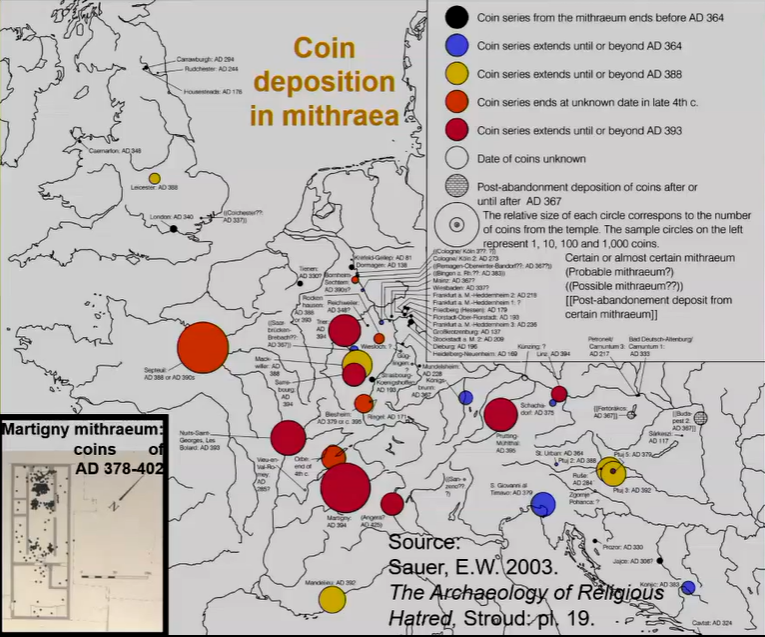
Coin deposistion in Mithraea across the western empire. Illustrates the spread of the Mithras cult and how ritual coin deposition occurred
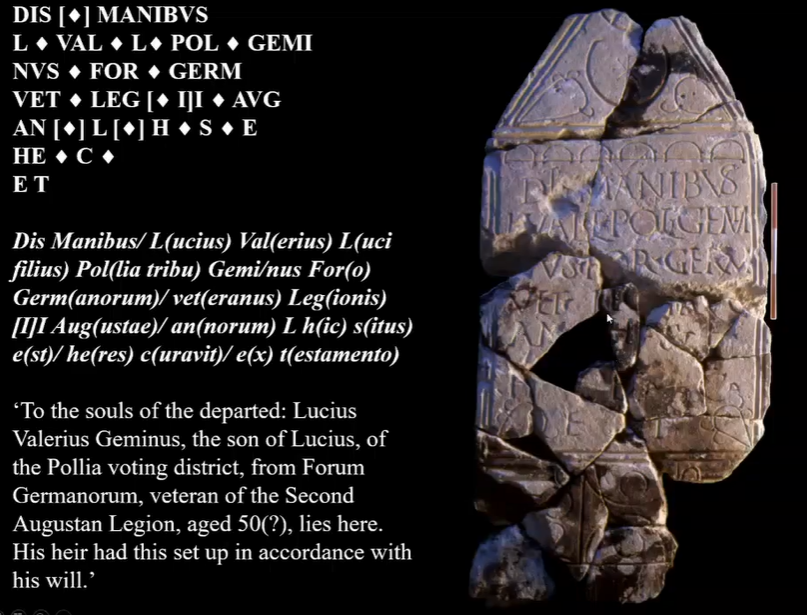
Grave marker for Lucius Valerius Geminus, who was buried in Alchester
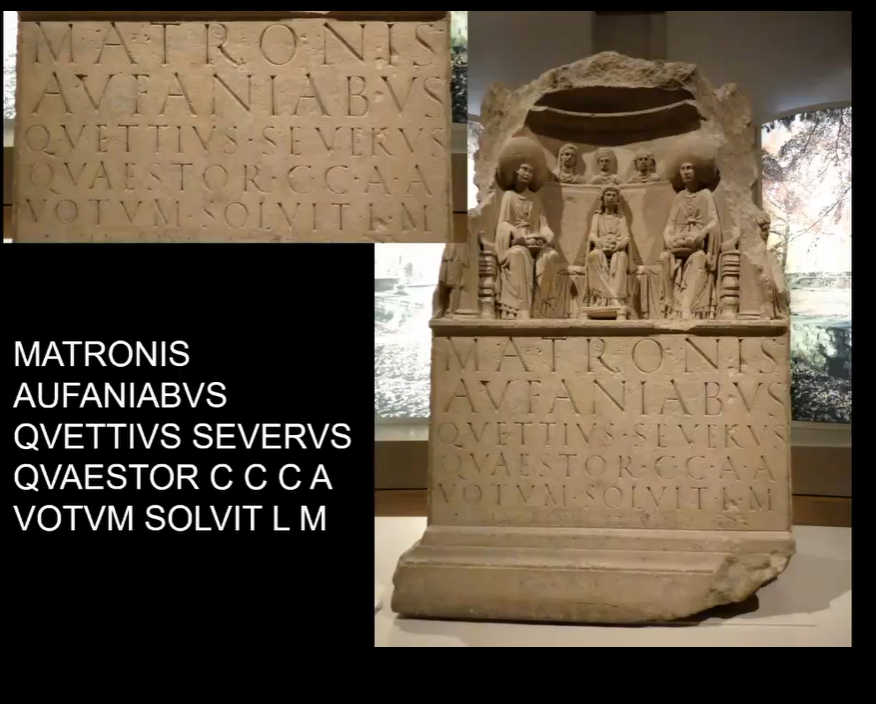
The matron goddesses or Matrona goddess of the Marne River
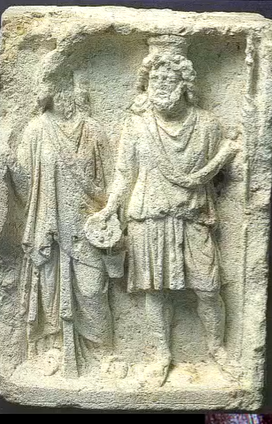
Isis and Serapis from Tawern Germany
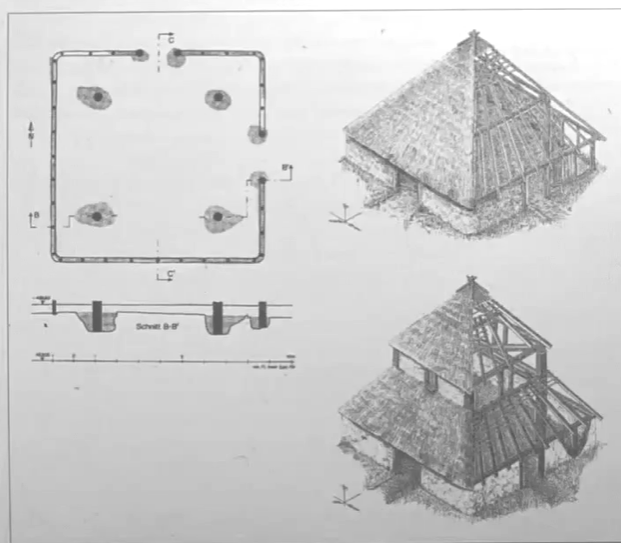
Romano-Celtic temples with Circular or Boxed rings of Ambulatories
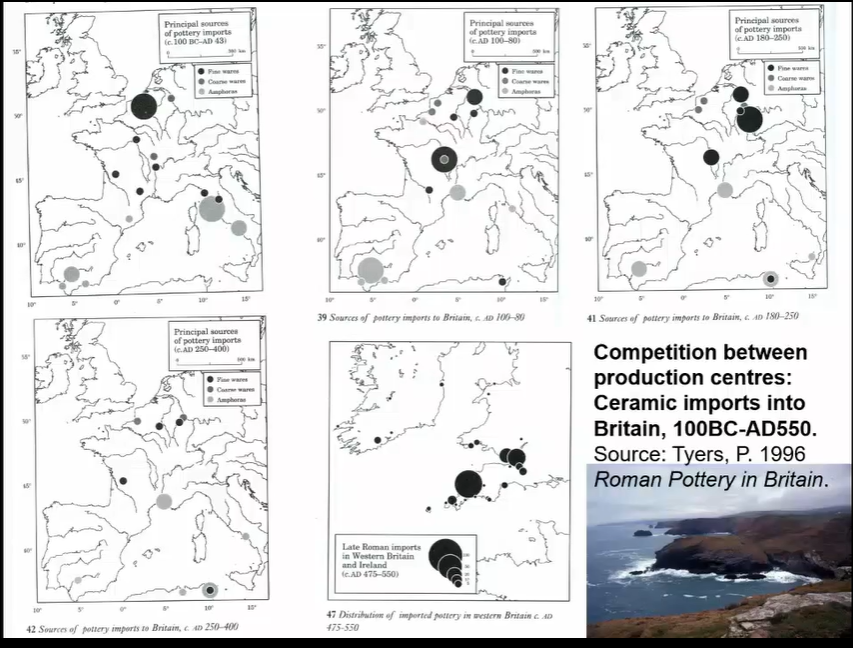
Terra sigillita or Samian ware production sites importing into Britain
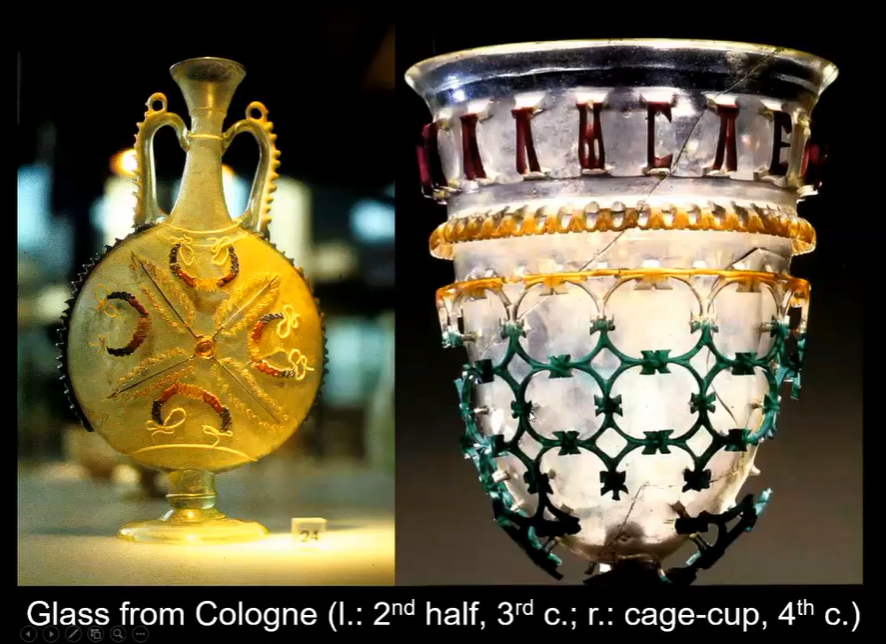
Cologne Glass ware
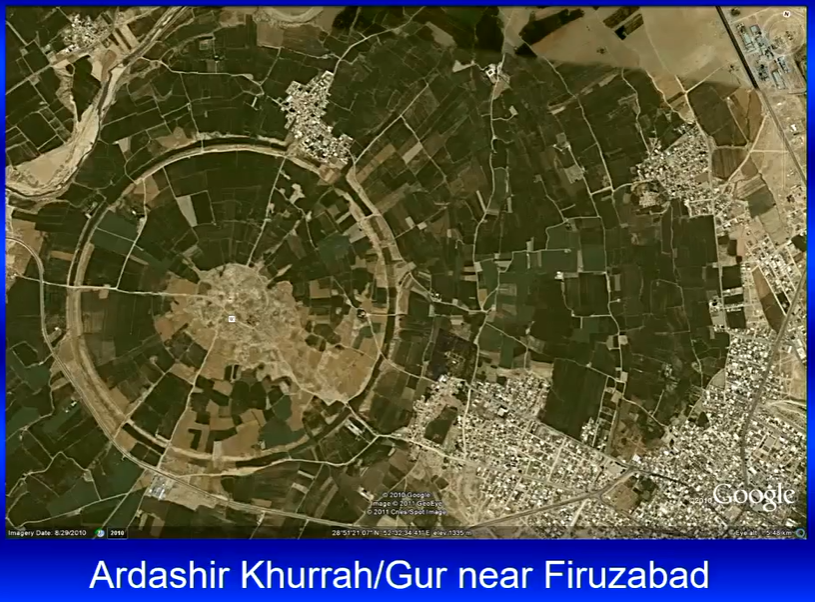
Ardashir Khurrah: a typical round style Sassanian settlement compared to the squared and grid roman style
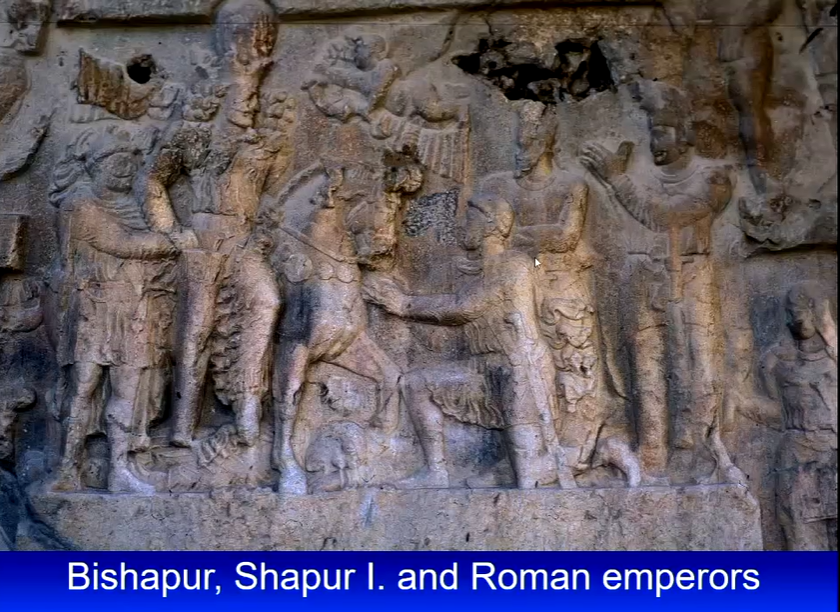
Shapur I holding the captured the Valerian, with Philip the Arab brokering peace
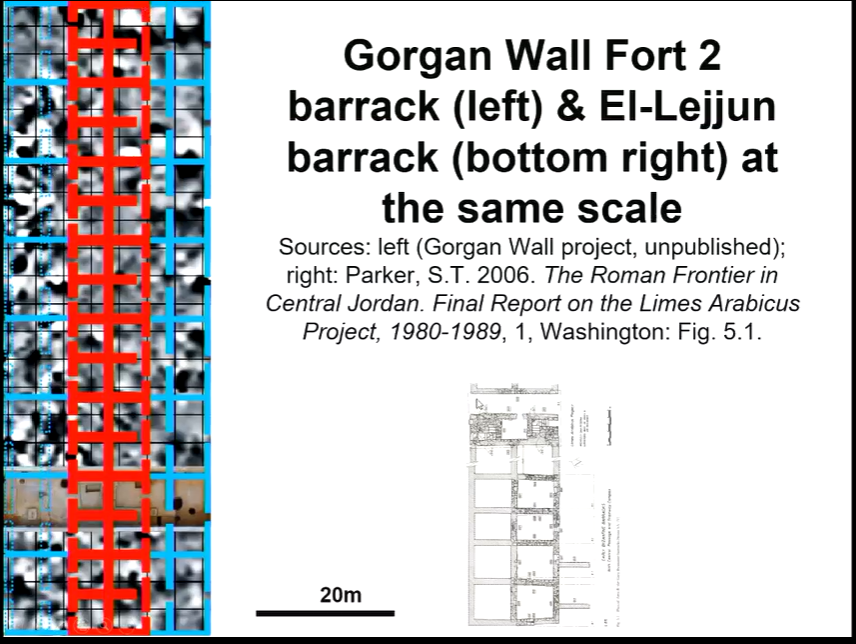
gorgon wall fort barrack in comparison of the El-Lejjun barrack
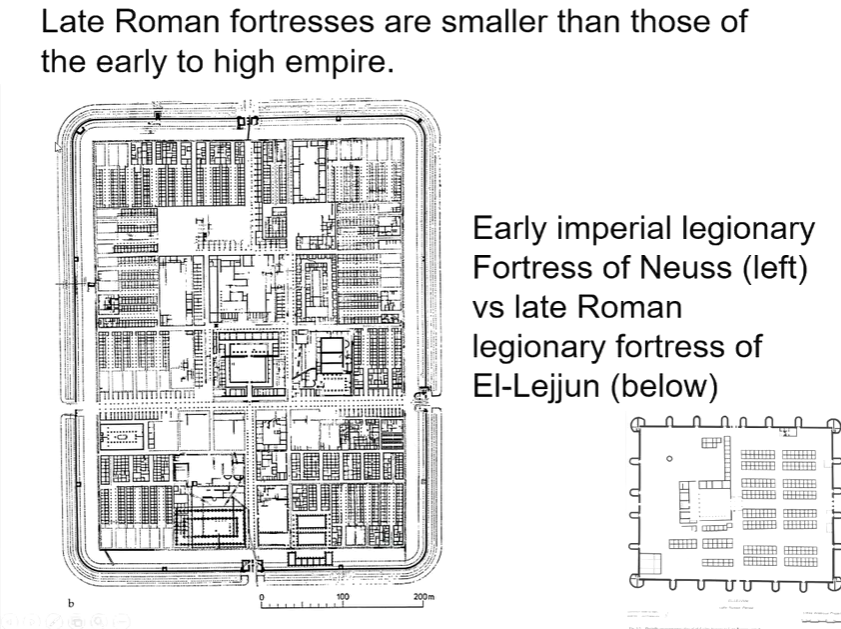
Early Legionary fortress of Neuss compared to Late Legionary fortress of El-Lejjun
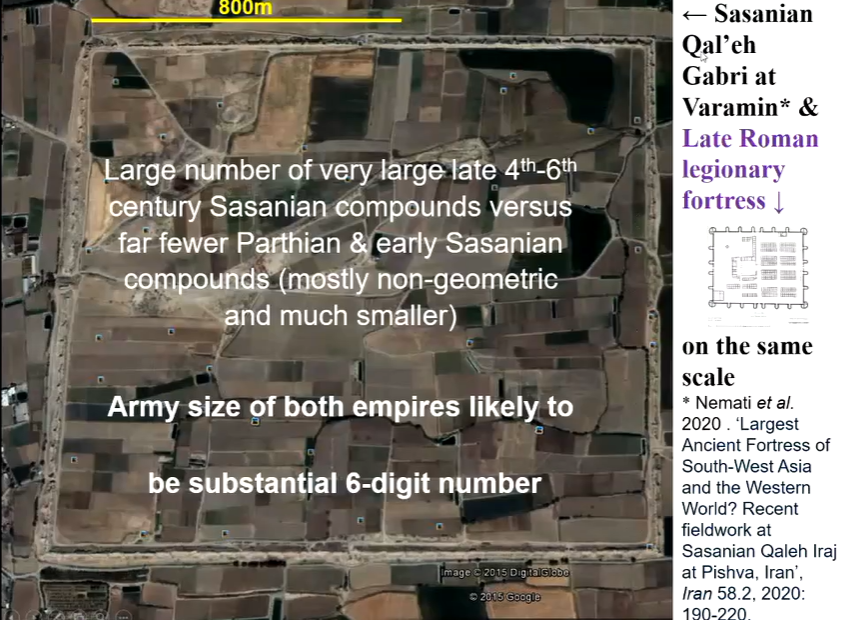
Qal’eh Gabri Sassanian fort, illustrating the extent of Sassanian military organisation during this period of conflict
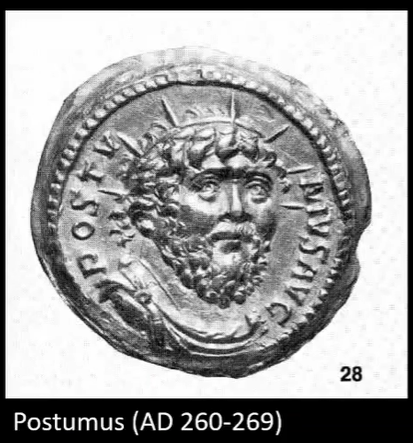
Postumus (260-9 AD): emperor of the cutaway west Gallic Empire with a radiate crown